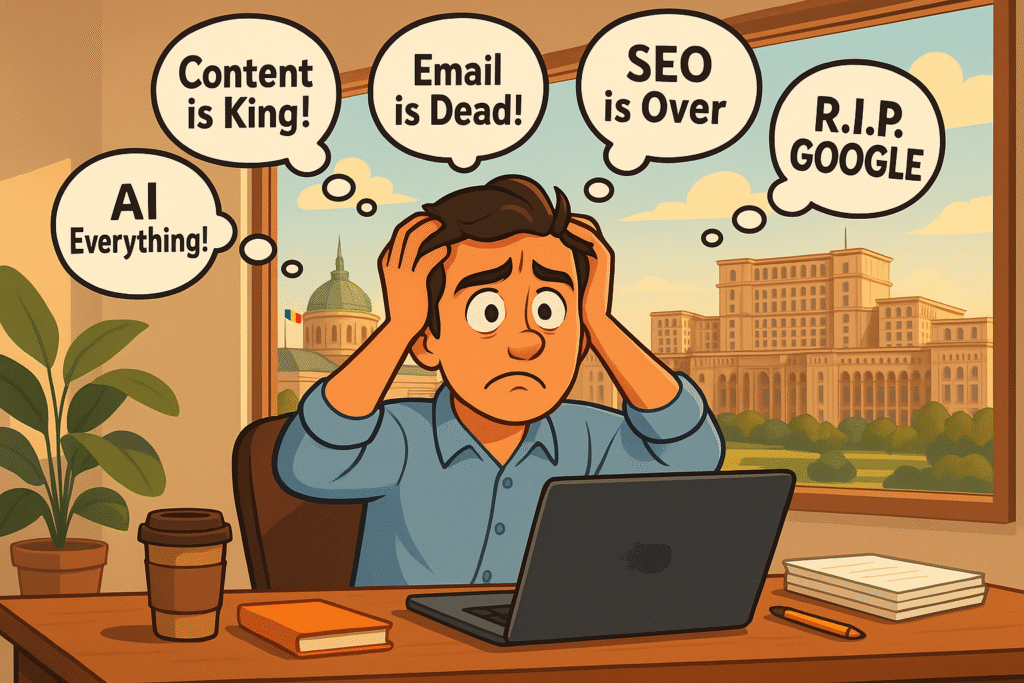
Cristian, A SaaS founder from Romania recently asked me something I’m hearing more and more often.
“How do I choose the right marketing direction when there’s a plethora of conflicting advice about brand building, content marketing, personal branding, AI marketing, SEO losing its power, and everything else?”
He called it “info fatigue” leading to “lack of clarity for marketing.”
Perfect phrase for a universal problem.
Every day, some marketing guru declares that email is dead, then someone else proves it’s more powerful than ever.
One expert swears by content marketing while another insists paid ads are the only way to scale.
Personal branding advocates clash with those pushing AI automation.
The result:
Smart founders freeze up, unable to choose any direction because they’re terrified of picking the wrong one.
But here’s something I’ve learned after 30+ years of watching products succeed and fail:
The companies that break through this paralysis are seldom the ones who came up with the “perfect” marketing tactic.
They’re the ones who understood their customers’ decision-making process first.
In I Need That, I discuss how successful products seldom win because of superior marketing tactics — they DO win because they align with how their ideal buyers naturally search for solutions.
Product Payoff: Scheduling leader Calendly didn’t succeed because they threw a few darts and hit the perfect marketing mix. They understood that their ideal customers were already struggling with scheduling coordination and actively searching for solutions to THAT specific pain point.
While competitors focused on feature comparisons and enterprise sales tactics, Calendly simply positioned itself wherever people were searching for “easy scheduling” solutions. Their organic growth came from solving a problem people were already desperately trying to fix, not from executing the “best” marketing strategy.
For a regional specialist like Cristian, being focused within a fairly small market is an advantage as much as a limitation. He can be hyper-specific in content marketing and search advertising.
The tactics follow the customer insights, not the other way around.
Start here: Before evaluating any marketing channel, spend time understanding where your best customers were looking when they found you. What search terms did they use? What communities do they belong to? What other solutions did they try first?
Those answers will tell you exactly which marketing approaches deserve your attention — and which guru advice you can safely ignore. (My own: nothing is dead. There are constant shifts, and when ChatGPT is unsatisfying, people go back to Google. Get into the head of your prospect, and then position yourself to be where they are going, through whatever tool most of them are getting there with!)
The strategic clarity you’re seeking isn’t hiding in another marketing framework.
It’s there in your customers’ minds, waiting for you to ask the right questions.
What’s the worst piece of marketing advice you’ve received that led you astray?
Tap that reply arrow and share your marketing overwhelm story.
Or reach out to my team of product marketing specialists at Graphos Product.
